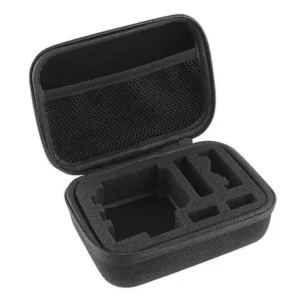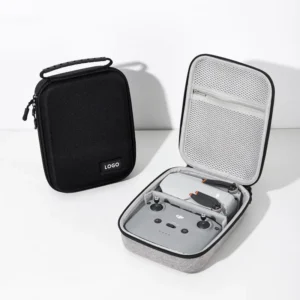What’s the Difference Between PVC and EVA Materials?
As material technology advances, people’s lives are evolving with it. In fields like packaging, bags, toys, footwear, and consumer electronics, PVC (Polyvinyl Chloride) and EVA (Ethylene-Vinyl Acetate) have become increasingly popular materials. However, many people still confuse the two. Let’s break down the differences between PVC and EVA to help you make informed choices for your products or sourcing needs.

1️⃣ Appearance and Texture
PVC: Available in both low-toxicity and non-toxic environmental grades. It typically has a semi-transparent yellowish tint with a glossy finish.
EVA: Naturally non-toxic and eco-friendly. It has a soft, elastic surface with a sticky feel (despite being non-adhesive), and is often more transparent than PVC. The look and texture are similar to PVC but with enhanced stretchability.
👉 Explore how EVA materials are applied in custom electronics cases from GAODA.
2️⃣ Material Composition & Processing
PVC is a thermoplastic resin formed by polymerizing vinyl chloride monomers under the influence of initiators. It has long been a dominant general-purpose plastic used in a wide range of industries.
EVA, on the other hand, is a copolymer of ethylene and vinyl acetate (C6H10O2), and is often used in foam products, hot melt adhesives, insoles, protective cases, and packaging inserts.
📦 Its flexibility and cushioning performance make EVA ideal for premium packaging like headphone cases and camera bags.
3️⃣ Flexibility and Hardness
PVC can be manufactured as either soft or rigid depending on the plasticizers used. Soft PVC is often tacky and pliable, while rigid PVC is stronger but prone to whitening at stress points.
EVA is naturally more flexible and resilient, with superior shock absorption—making it ideal for outdoor gear, children’s items, and anti-impact storage cases.
4️⃣ Cost Comparison
PVC: Costs around 6000–7000 CNY per ton depending on grade.
EVA: Priced around 2000 CNY per cubic meter, depending on thickness and density.
💡 For B2B bulk orders, EVA may offer better long-term value for lightweight, eco-conscious, and durable designs.
5️⃣ Material Properties
| Property | PVC | EVA |
|---|---|---|
| Electrical Insulation | Excellent | Moderate |
| Chemical Stability | Good, but decomposes at high temperatures | Excellent |
| Temperature Range | -15°C to 55°C | Broader range, softens and flows under heat |
| Environmental Safety | Depends on formula (some toxic variants exist) | Naturally non-toxic and safe |
📌 Use Case Highlights: GAODA EVA Custom Bags
✅ EVA Tool Cases – Shockproof, rugged, and ideal for technicians
✅ EVA Headphone Cases – Lightweight yet protective for Sony, Bose, Beats
✅ EVA Laptop Bags – Velvet-lined interiors with splash-proof outer shells
✅ EVA Cosmetic Bags – Stylish and functional for beauty & skincare brands
🌐 Visit our catalog: www.gaodacase.com
Final Thoughts
While PVC and EVA may look similar on the surface, they differ significantly in terms of flexibility, eco-friendliness, cost-effectiveness, and long-term durability. In today’s market, more and more B2B buyers are leaning towards EVA-based packaging and custom bag solutions to meet higher standards in safety and brand value.
Whether you’re a bag brand, Amazon seller, packaging supplier, or OEM/ODM manufacturer, GAODA can help you find the right material and design for your next product line.





